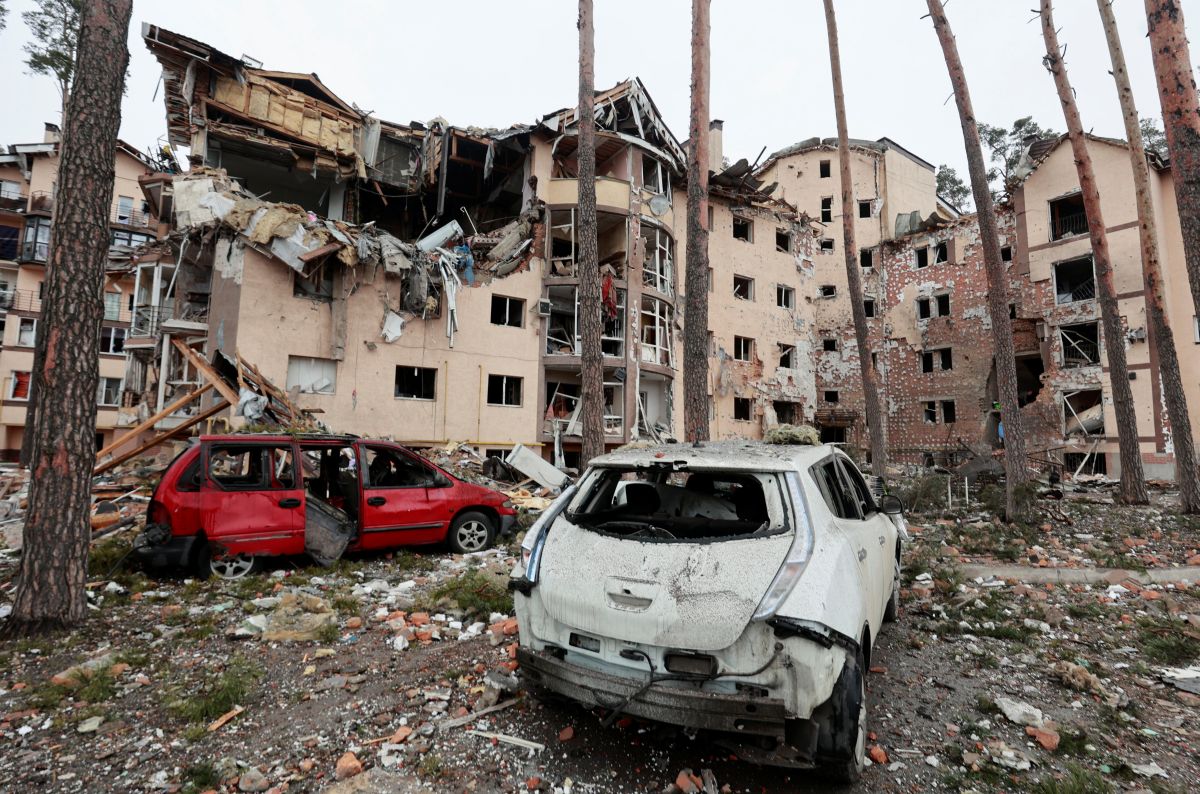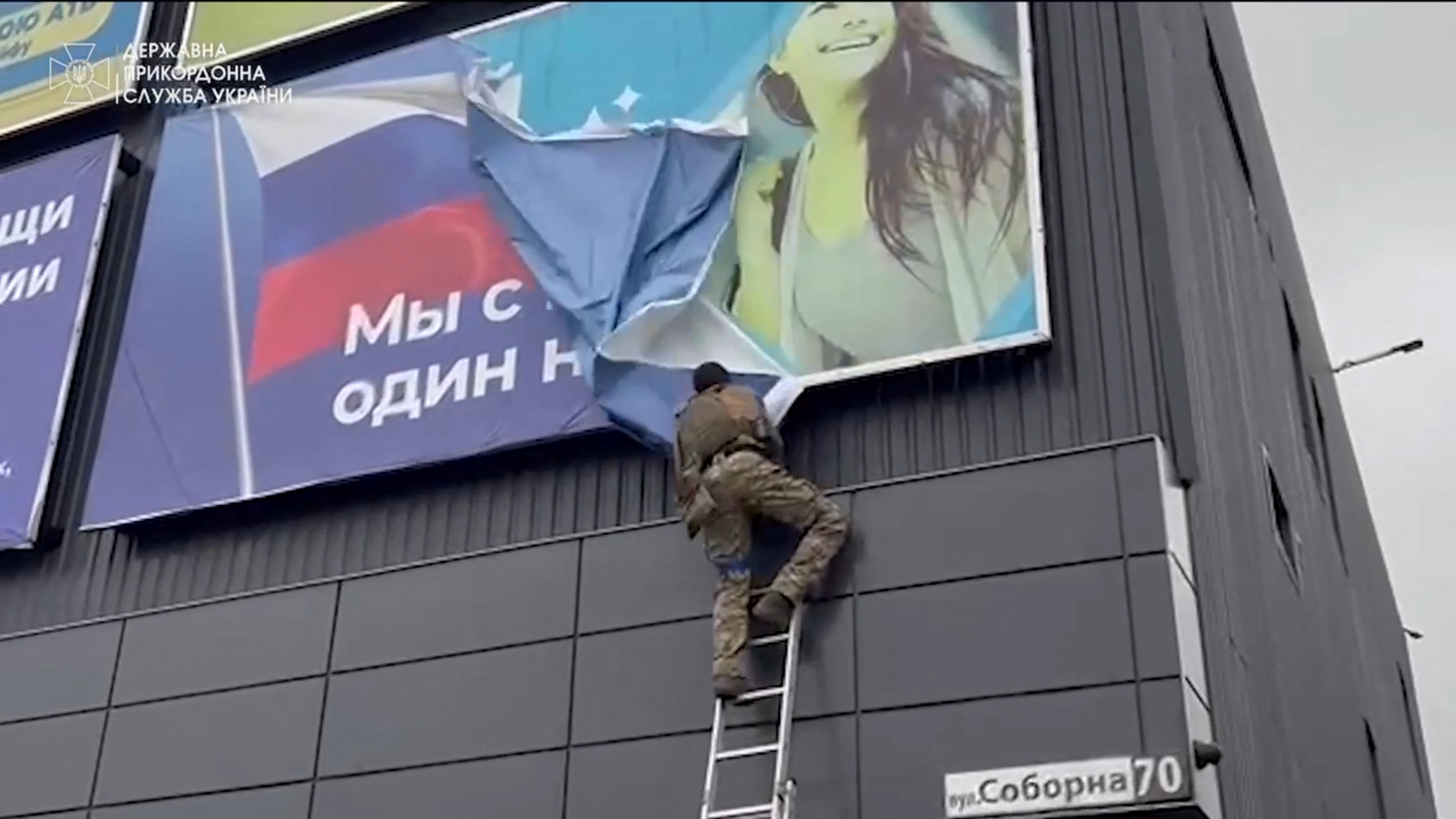Russian Attacks May Prompt Increased Refugee Flows from Ukraine
Russia is continuing its intensive attacks on critical infrastructure in Ukraine. These are deliberate actions that violate international humanitarian law and are aimed at breaking the morale of Ukrainian society. Power outages mean that many towns and villages are not only without heating but also without water. Further devastation and the difficulty of repairs could trigger a humanitarian catastrophe. Most of the population will try to survive the winter in their current residences or by resettling in smaller towns. Increased refugee movement across borders, especially to Poland, is also possible.
(1).jpg) Ashley Chan / Zuma Press / Forum
Ashley Chan / Zuma Press / Forum
Destruction of Infrastructure
Russian mass rocket attacks on Ukrainian critical infrastructure began in October after Ukrainian forces launched a successful counter-offensive in the Kharkiv region and the Crimean Bridge was damaged. From the first day of the full-scale aggression, Russia has been deliberately attacking civilian objects in order to break Ukrainian morale, but the current scale of the attacks threatens the existence of the population and the functioning of the state. Winter weather conditions are expected to increase the effect of depriving the population of access to electricity and heat. The first major attacks occurred on 10-12 October when around 30% of Ukraine’s energy infrastructure was damaged, including thermal power plants, hydroelectric power plants, power stations, and transmission lines. In total, up to 50% of the energy infrastructure had been damaged by mid-December, including all major transformer substations and hydroelectric and thermal power plants. In addition to emergency blackouts, scheduled power cuts are being introduced across Ukraine to cope with a power deficit of up to 30%.
Ukrainian electricity engineers are trying to repair the damaged infrastructure on an ongoing basis. However, the work is hampered by subsequent attacks on the same objects and a shortage of spare parts, including power transformers, which can take up to about a year to produce and deliver (also from abroad). Current estimates assume that it would take a minimum of three months to rebuild the power grid to function without major interruptions. A full restoration (with modernisation) to pre-aggression status would take 2.5-3 years, provided there is no new damage.
Ukraine receives financial and equipment assistance—both needed for infrastructure repair and air defence—from partner countries. At a conference in Paris on 13 December, representatives of 46 states, including Poland, collectively pledged €1 billion (in financial grants and equipment). Of this sum, €415 million will be spent on repairs to the energy infrastructure, but the Ukrainian authorities estimate that the needs are at least twice as much. Ukraine also needs support in reducing the power deficit by importing electricity from the EU, which has been technically possible since 16 March when its grid was integrated into the European system. However, due to the scale of the needs and the current state of the transmission networks on the Ukrainian side, this will not meet the needs.
Humanitarian Situation in Ukraine
The ongoing military operations and attacks on critical infrastructure threaten the security of millions of Ukrainians. The lack of electricity means, among other things, a lack of water and heating. This poses an increased threat during the winter period. Ukraine has a climate of a more continental variety than Poland, which means higher air temperature amplitudes and colder winters. The efficiency of the healthcare system is also limited. More than 1,100 health centres and hospitals have been destroyed or damaged, and blackouts are hampering those that are operational. Due to the attacks on energy infrastructure, so-called “points of invincibility” are being set up—designated places with power generators, water, internet access, and first aid. There are already more than 5,000 of them across the country.
Iryna Vereshchuk, Ukraine’s deputy prime minister, called on people staying abroad not to return for the winter period. Authorities in some cities (e.g., Odesa) are calling for their residents to consider temporarily moving to smaller towns, where it is easier to survive without electricity. More than half (53%) of households in Ukrainian cities are heated by central heating systems, which means that they depend on energy from the now-destroyed heat and power plants. Also the operation of other public services, such as water supply and sewage systems, are dependent on electricity. The situation is particularly difficult in occupied or recently recaptured areas where critical infrastructure has been deliberately destroyed by retreating Russian forces.
Current Refugee Movement
Since the beginning of the Russian aggression, around 7.8 million people have left Ukraine, of which 4.8 million have registered with various temporary protection programmes across Europe (UNHCR data). Most of the people left in the first two months after the invasion. However, between May and September, more people returned to Ukraine than left. In Poland, for example, of the total number of 1.4 million people registered in the PESEL system, about 1 million remain. At the same time, more than 6.8 million Ukrainians are internally displaced persons who seek safety in western, southwestern, and central regions of Ukraine.
Many former refugees have decided to return despite the Russian attacks, in part because some host states are limiting the scope of assistance. For example, in the UK, about 30% of the Ukrainian citizens living there use the Homes for Ukraine programme (offering remuneration for those providing housing to refugees), which is coming to an end. In Poland, a similar programme lasted only 120 days. Social mobilisation in support of Ukrainians in host countries is also lower now than immediately after the invasion in February. Although a slight increase in departures from Ukraine has been seen in recent weeks (both in data from Poland and Frontex data for the EU as a whole), so far the numbers do not suggest that a significant influx of refugees has started. This could change if the situation in Ukraine worsens. The World Health Organisation estimates that up to 3 million people could leave Ukraine this winter.
Conclusions and Perspectives
Russia will continue its criminal attacks on civilian targets, an action that directly targets the functioning of the Ukrainian state and its society. Prolonged power cuts threaten the operation of public services. The situation of the population (especially in cities) will worsen as temperatures drop and blackouts become more frequent. Some urban residents will seek temporary shelter mainly in villages, where it is easier to function without electricity supply. If the Ukrainian authorities are able to maintain at least a few hours’ supply of electricity a day and public services, it is likely that most people will not decide to leave their homes.
If it is not possible to repair the energy infrastructure on an ongoing basis, especially with sub-zero temperatures and prolonged blackouts, decisions to partially evacuate some cities such as Kyiv or Kharkiv are possible. In such a scenario, most refugees are likely to find shelter in other parts of Ukraine. However, a new refugee movement out of the country, including to Poland, can also be expected.
The damage also raises the potential cost of necessary assistance from Ukraine’s partners, with the aim of discouraging further support for the country. Russia is exploiting its attacks on Ukrainian infrastructure by conducting parallel disinformation activities against Western societies. It presents a narrative in which a potential new wave of refugees would be a threat to the living standards and security of the population of host countries.
Ukraine will need increased assistance in the coming months in four areas. First and foremost, the country needs equipment and materials to repair its energy infrastructure, especially as continued attacks are preventing or slowing down production on site. Second, various types of generators and heating equipment are needed, not only for civilians but also for health institutions and others. Strictly humanitarian aid is also needed, aimed primarily at internal refugees and residents of frontline towns. Third, it is necessary for European countries, including Poland, to prepare for the influx of people fleeing Ukraine, including the creation of a system of temporary accommodation points with food, intended for stays of several months, and to facilitate relocation with transport to areas currently less burdened with receiving refugees. And last but not least, further deliveries of air defence systems are needed to help protect critical infrastructure.





